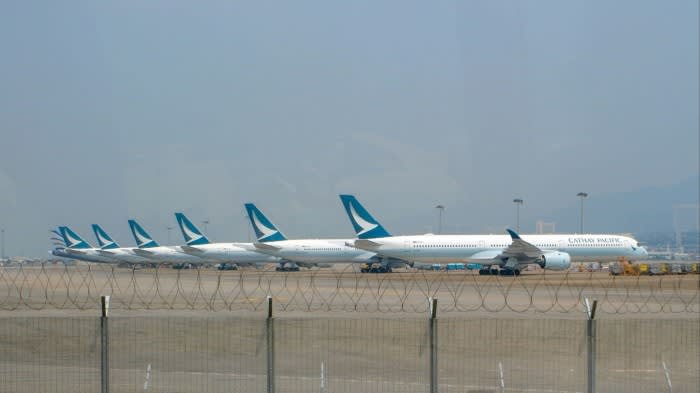Unlock the Editor’s Digest for free
Roula Khalaf, Editor of the FT, selects her favourite stories in this weekly newsletter.
Europe’s aviation safety regulator has said it will require one-off inspections of some engines on Airbus A350 long-haul aircraft after a Cathay Pacific plane experienced problems mid-flight this week.
The European Union Aviation Safety Agency said it required airlines to conduct a one-time inspection to remove what it said were “potentially compromised high-pressure fuel hoses”.
The agency said it was taking “precautionary measures” based on “preliminary information” provided to it by regulators in Hong Kong, as well as from Airbus and Rolls-Royce.
Cathay has been examining its fleet of 48 A350 aircraft after a Zurich-bound flight was forced to return to Hong Kong following an in-flight engine fire.
Rolls-Royce’s Trent XWB engines power both variants of the A350, the A350-900 and the larger A350-1000, which was the model affected by the incident.
The agency’s statement is the first official confirmation that the issues stemmed from problems with the fuel lines to the engines.
EASA later on Thursday clarified that the inspection directive covered only Rolls-Royce’s Trent XWB-97 engines, which power the A350-1000.
The visual inspections, the agency said in a statement accompanying the emergency “airworthiness directive”, needed to take place over the next three to 30 days depending on the age of the engines.
There are 86 A350-1000s in operation globally. Cathay is one of the largest operators of A350s, and its fleet includes 18 A350-1000s. Other large A350-1000 operators include Qatar Airways, BA and Virgin Atlantic. The carriers have all been contacted for comment.
Rolls-Royce’s Trent XWB-84 engines, installed on the more popular A350-900 model, “are similar but differ in design and service history”, EASA said, noting that an extension of the inspection measures was not warranted at this stage.
Airbus said it acknowledged the “information provided by EASA”, adding that it was “working closely with Rolls-Royce and the authorities on the implementation of this precautionary measure”.
Rolls-Royce said it was “working closely” with EASA. The UK group also pointed out that Cathay Pacific had said its inspections took “24 hours to cover their Trent XWB fleet, and that they expect all replacement parts to be installed in less than a week since the incident”.
“We are focused on minimising any short-term disruption caused by these inspections,” Rolls-Royce added.
Cathay has been forced to cancel some flights while it examined its entire fleet of 48 A350 jets following the incident on Monday. The carrier found 15 aircraft where engine fuel lines required replacement, but said it expected to resume full operations by Saturday.
Investors have been watching the situation closely after a recent string of issues with aircraft engines that have proven disruptive and costly to airlines as well as engine makers.
Shares in Rolls-Royce, which have been in focus since the incident, are down almost 4 per cent since the news of the emergency first came out on Monday.
Additional reporting by Chan Ho-him in Hong Kong


